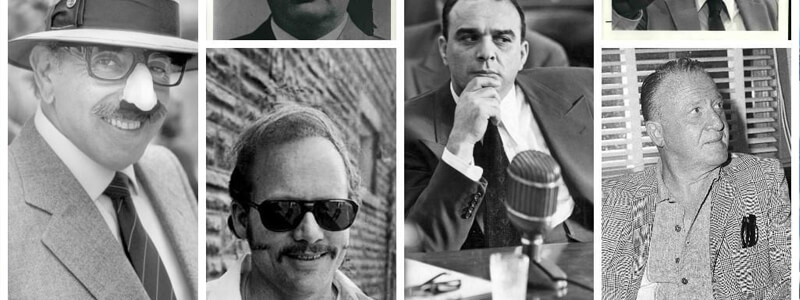The Past
Cleveland and its surrounding areas have quite a long and colorful history when it comes to Mafia and Organized Crime. There are many facets to the “Cleveland Mob”… in their activities, violence, and connections to other Mafia cities. From the sugar wars, gambling and prostitution in Newport Kentucky, Las Vegas, the infamous Mob Wars in the 1970s, the Teamsters, and everything in between.
Some Cleveland Mob activities are more widely recognized as they generated more publicity than others. The most obvious… the mob wars of the mid-seventies. It was at that time the press labeled Cleveland “Bomb City, U.S.A.” Thirty-six bombs exploded around Cleveland in 1976 alone.
Another active and well-publicized period was the early 80’s… arrests, convictions, plea deals, and mob informants. Much can be learned from the testimonies and government documents from that period.
A good overview from that period comes from government documents of Attorney General John Roberts. One document, a letter, an outline of what he called “Successes against Organized Crime” sent to Kenneth Starr in 1983, detailing some of the investigations and arrests:
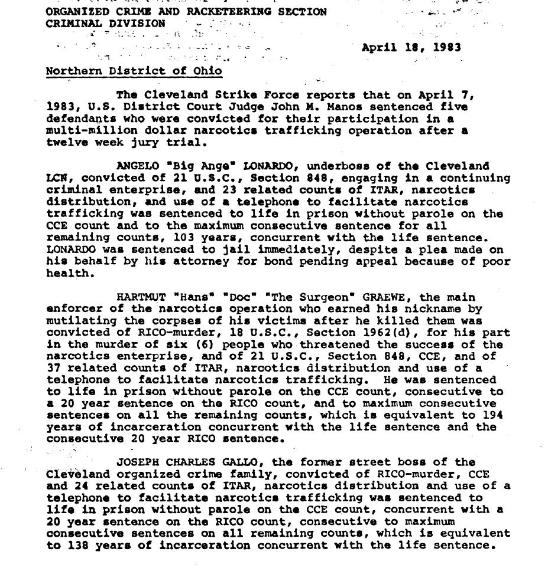
In this FBI surveillance photo, taken circa 1980, Cleveland Mafia capo Joseph Gallo, left, speaks with a mob associate. Gallo was sent to prison for life in 1982 on drug conspiracy charges. He is only one of two Cleveland “made” mafioso still in prison. Ronald Lucarelli Jr. is the other, was reported to get out no later than 2012.

Recent Years
“The Cleveland Mob still exists and may actually be growing… “
“The Cleveland Mafia died in the 1980s and hasn’t returned… “
Two statements seem to be at odds, yet both may be correct. But, how can that be, since they seem to be talking about the same thing?
The fact is, they aren’t. The statement about the Cleveland Mafia Family refers to a specific hierarchy of ranking mob leaders, including a boss, underboss, consigliere (advisor), captains, lieutenants, soldiers, and associates.
While there is no evidence that such a hierarchy exists, there’s an abundance of reports that a great deal of Mafia-related organized crime activities have recently occurred, and are increasing in the Greater Cleveland area. That’s the Cleveland mob, as generally described by federal law enforcement sources.
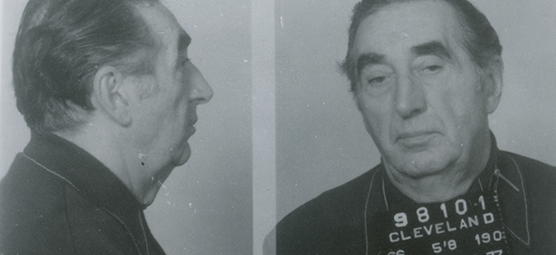
Cleveland mobsters, in the traditional sense of the Italian-American Mafia, include as many as 10 inducted members and their associates who vastly outnumber them and have yet to be inducted. Furthermore, sources on both sides of the law say the number of inducted Cleveland Mafia members has increased in recent years, up from just two made men in the mid-1990s. But what remains in doubt is whether these made members have taken on leadership roles to round out a Mafia hierarchy in Ohio’s largest metropolitan area.
So what’s the Cleveland Mob doing these days? Quite simply the same things they’ve always been doing. In addition to legitimate enterprise, mob activities include gambling, drugs, stolen cars, fencing, labor racketeering, and just about anything that can make money.
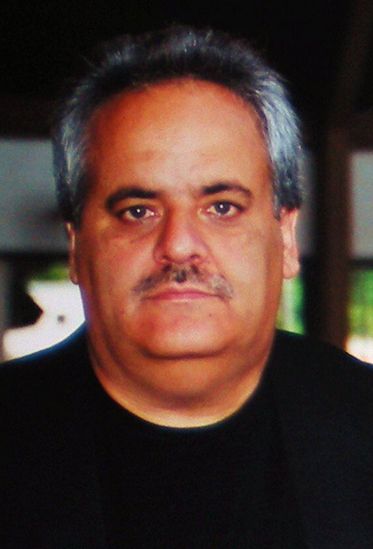
Although in recent years Joseph J. “Joe Loose” Iacobacci, Jr., has been reported by some law enforcement and media sources as the boss of Cleveland’s Cosa Nostra, he is now (semi) retired and living in Pennsylvania. Some of those same sources now report the key figure in Cleveland is Russell J. Pappalardo.
To learn about the resurgence of organized crime in Cleveland you must turn to newspapers in other cities that have been touched by mobsters whose tentacles extend outward from the Lake Erie metropolis.
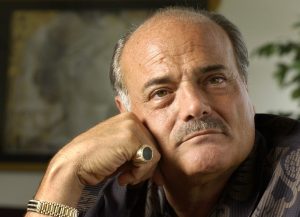
One example is the article from The Rochester (New York) Democrat and Chronicle reported on Jan. 28, 2003 that the Cleveland Mob ran a stolen car ring that moved heisted vehicles from Rochester to Cleveland. The source for that information was Anthony P. Delmonti, a Cleveland con man turned federal informant who lived at the fringes of Cleveland’s mob scene, and reportedly a close associate of former mob boss Iacobacci.
Cleveland Mob Bosses
The 1909 dissolution of a Sicilian criminal society based in Marion, Ohio, suggested the presence of the Mafia in the Cleveland area. When the USPS Inspection Service went after extortion racketeers in the Society of the Banana in June 1909, ten people were arrested. Antonio and Joseph Musso, two Cleveland peddlers, were arrested in connection with that regional gang. Under the command of Joe Lonardo, the Cleveland Mafia organization first became known during the early Prohibition Era.
 Joseph “Big Joe” Lonardo (1920-1927)
Joseph “Big Joe” Lonardo (1920-1927)
He was already a successful Cleveland businessman when Prohibition (1920-33) arrived, rendering alcoholic beverages illegal. Lonardo supplied corn sugar, an otherwise legal ingredient of whiskey and granted sugar, an otherwise legal ingredient of whiskey and granted “franchises” to bootleggers who made illegal alcohol. In 1927, Lonardo briefly returned to his native Sicily, leaving Salvatore “Black Sam” Todaro in charge. But Todaro had secretly reached out to Lonardo’s chief competitors — the Porrello brothers. When Lonardo came back to Cleveland, Todaro had him and his brother John killed.
 Joseph “Big Joe” Porrello (1927-1930)
Joseph “Big Joe” Porrello (1927-1930)
He assumed control of Cleveland Mob and its hold on the local bootleg liquor rackets. Competitors, including Jewish racketeers led by Moe Dalitz, began bringing illegal Canadian liquor across Lake Erie. In 1929, 18-year-old Angelo Lonardo avenged the murder of his father (Joseph Lonardo) when he and Dominick Sospirato shot and killed Black Sam Todaro. Another man, Frank Milano, of the Mayfield Road Mob, was muscling in on the Porrellos’ operation by joining with Dalitz to provide the favored Canadian liquors. A year later, Milano took over when his associates killed Joe Porrello and bodyguard Sam Tilocca at Milano’s restaurant in Little Italy. Only weeks later, Milano strengthened his control by ordering the murder of three of Joe Porrello’s six brothers — Jim, Raymond, and Rosario — at a grocery store at East 110th and Woodland.
 Frank Milano (1930-1935)
Frank Milano (1930-1935)
Ruthless and cunning, Frank and his brother Anthony consolidated power over Cleveland’s Italian Mafia and united with the local Jewish Syndicate to expand into gambling, loansharking and influence over fledgling labor unions, as the end of Prohibition was foreseen in 1933. Such post-Prohibition organized crime activities became the bread and butter of the Cleveland Mafia for decades to come. Milano’s dominance over the Cleveland Mob coincided with the creation in 1931 of the national American Mafia, or Cosa Nostra (“Our Thing”).
Frank Milano, his brother Anthony and Frank’s two sons, Peter and Carmen, became major forces in the national Cosa Nostra organization. Anthony, Peter and Carmen Milano are blamed for helping to form the Southern California Cosa Nostra, based in Los Angeles, in the 1940s. But in 1935, Frank Milano was indicted for income tax evasion. He avoided the case by fleeing to Mexico where he stayed for many years, before dying in 1970 in a Los Angeles hospital.
 Alfred Polizzi (1935-1944)
Alfred Polizzi (1935-1944)
Polizzi was a rising star in Milano’s Mayfield Road Mob. He was named Milano’s successor, though some say Dr. Joseph Romano was boss until Angelo Lonardo killed him in 1936. Polizzi and his adopted Jewish brother Charles Polizzi (nee Leo Berkowitz) solidified links with Jewish gangsters to create one of the most potent crime operations in the nation. The Cleveland Mafia owned or controlled many casinos in Ohio and Northern Kentucky. But increased law enforcement interference would cause the Cleveland Mafia to look west, to Las Vegas. In 1944, Polizzi pleaded guilty to tax evasion, served a year in prison and relocated to Coral Gables, Fla. to run real estate and construction businesses.
 John Scalish (1944-1976)
John Scalish (1944-1976)
An associate of Milano and Polizzi, Scalish was responsible for the Cleveland Mafia’s continued rise in power, and for its eventual downfall. He oversaw Cleveland’s move into Las Vegas, with Moe Dalitz taking over the failing Desert Inn from Bugsy Siegel. Dalitz also led the development of other casinos, a major hospital and other Las Vegas projects, many of which were financed by the mob-controlled Teamsters union. Cleveland mobsters had much control over the Teamsters union by such men as Anthony Milano and Jewish gangsters Bill Presser and Milton “Maishe” Rockman. By the 1950s, the Cleveland Mafia reached its peak, with 60 made members, and many more associates, according to the FBI.
 But in Scalish’s later years as boss, he inducted no new members into the Cleveland Mafia. The existing membership began to gray with age. Scalish was content to live off the “skimming” of profits from Las Vegas casinos, plus the mob’s gambling operations in Cleveland and Youngstown and other activities. Inducting new members meant he would have to share those profits with younger blood whom he couldn’t trust. Scalish died in 1976 while undergoing risky heart surgery, and without declaring a successor beforehand. That underscored his lack of interest in the Cleveland Mafia’s future.
But in Scalish’s later years as boss, he inducted no new members into the Cleveland Mafia. The existing membership began to gray with age. Scalish was content to live off the “skimming” of profits from Las Vegas casinos, plus the mob’s gambling operations in Cleveland and Youngstown and other activities. Inducting new members meant he would have to share those profits with younger blood whom he couldn’t trust. Scalish died in 1976 while undergoing risky heart surgery, and without declaring a successor beforehand. That underscored his lack of interest in the Cleveland Mafia’s future.
 James “Jack White” Licavoli (1976-1982)
James “Jack White” Licavoli (1976-1982)
Though street tough from his early years as an enforcer for the Purple Gang in Detroit and St. Louis during Prohibition, Licavoli reluctantly took the reigns as Cleveland’s boss. Scalish’s lack of a clear successor gave rise to a competing mob faction, led by Irish gangster Danny Greene and Teamster leader John Nardi.

The result was the bloodiest mob war in Cleveland since Prohibition, with nearly 40 car bombings and other mob hits from mid-1976 to mid-1977. All the killings brought a great deal of federal heat against the surviving, but aging Mafiosi, many of whom went to prison for crimes stemming from the 1977 assassination of Green. Licavoli was among those eventually nabbed for their roles in the Greene murder. He was sent to federal prison in 1982 and died behind bars just three years later.
 Angelo “Big Ange” Lonardo (1982-84)
Angelo “Big Ange” Lonardo (1982-84)
Named interim boss when Licavoli went to prison, Lonardo had a brief time at the helm of the Cleveland Mafia. Yet, in 1983, he inducted two men — Joseph Iacobacci and Russell Papalardo — who would later play major roles in the Cleveland Mob’s rebirth. That same year, Lonardo was convicted and sentenced to life in prison for his role in a mob drug ring. Lonardo, unable to face the prospect of dying in prison, became the highest-ranking federal informant in U.S. Mafia history. Having been involved in the mob since the 1920s, he proved invaluable as a witness in court cases from Los Angeles to New York City, causing serious damage to the national Mafia hierarchy. Lonardo died March 31, 2006 at the age of 95.
 John “Peanuts” Tronolone (1985-91)
John “Peanuts” Tronolone (1985-91)
Another interim boss, Tronolone was a close associate of New York’s Genovese Family, which had represented the Cleveland Mafia on the New York Commission since the 1930s. While Tronolone was often considered a boss in absentia, having a travel agency in Miami, he was often seen in Cleveland in the late 1980s. But in 1989, he was arrested for possession of stolen jewels and died in prison only two years later. He named no successor, as all known Cleveland Mafia members were either dead or in prison.
No boss known (1991-1993)
From 1991-1995, Anthony Liberatore was the highest-ranking Cleveland Mafia member out of prison, followed by Joseph Iacobacci, then Russell Papalardo.
 Joseph “Joe Loose” Iacobacci (1993- 2006)
Joseph “Joe Loose” Iacobacci (1993- 2006)
Despite a brief federal prison stint in the late 1990s, Iacobacci steadily rebuilt the Cleveland Mob, reportedly with the help of the Chicago Outfit. Since 1990, when no known Cleveland Mafia members were on the streets, there are as many as 10 made members today, with many more associates. In addition to its Chicago links, the Cleveland Mob has documented activities in Rochester NY, Warren/Youngstown OH, Pittsburgh PA and, of course, in Greater Cleveland, generating up to $30 million in illicit profits annually. Iacobacci is now (semi) retired and living in Pennsylvania.
 Russell J Papalardo (2006 – )
Russell J Papalardo (2006 – )
Reported to be the key figure in Cleveland. Russell Papalardo was convicted in 1986 of helping to run a multimillion-dollar cocaine ring with leaders of the Cleveland mob, according to published reports. He served about four years in prison, according to the U.S. Bureau of Prisons.
Angelo Lonardo is said to have inducted Papalardo and Joseph Iacobacci into the Cleveland mob in 1983. Lonardo later became a government witness, testifying in sworn testimony before the United States Senate Permanent Subcommittee on Investigations, by way of Affidavit, that John “Curly” Montana and Papalardo were the men who planted the Trojan Horse Bomb in the Teamsters Parking Lot, killing John Nardi.
Because the Cleveland mob is a close-knit, low-key group, little is known about it today.

